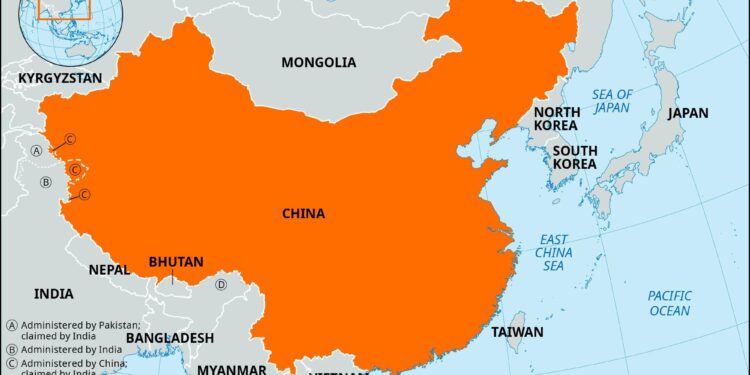In a significant move set to enhance travel connectivity between China and Malaysia, Juneyao Airlines has announced the launch of new flights connecting Shanghai and Kuala Lumpur. This expansion not only marks a milestone for the airline but also underscores the strengthening international ties between the two nations, which have been actively fostering economic collaboration in recent years. As tourism continues to rebound, the introduction of these direct flights is expected to bolster travel opportunities for both business and leisure travelers, further integrating the two economies and promoting cultural exchange. This development comes at a time when global travel is witnessing a resurgence, positioning China and Malaysia as key players in the growing travel landscape.
China and Malaysia Enhance Travel Connectivity with New Juneyao Airlines Flights
As part of an ongoing effort to bolster international travel ties, Juneyao Airlines has announced its new route connecting Shanghai and Kuala Lumpur. This initiative marks a significant step forward in enhancing connectivity between China and Malaysia, facilitating easier travel for both business and leisure passengers. The introduction of these direct flights is expected to promote cultural exchanges and economic collaboration, with both nations aiming to capture a greater share of the growing tourism market in Southeast Asia.
The new service will feature a variety of flight options, and highlights include:
- Frequency: Daily flights ensuring flexibility for travelers.
- Convenient timings: Designed to optimize layovers for seamless connections.
- Competitive fares: Attractive pricing aimed at encouraging more bookings.
With this strategic expansion, both countries anticipate an increase in tourism revenue and an elevation in mutual investments. The successful launch of this new route sets a precedent for further collaboration between airlines in both regions, paving the way for additional routes and partnerships in the future.
Impacts of Expanded Air Routes on Tourism and Economic Growth in Southeast Asia
The addition of direct flights between Shanghai and Kuala Lumpur is poised to catalyze a significant shift in tourism dynamics within Southeast Asia. This newly enhanced connectivity is likely to boost travel from one of China’s largest cities, contributing to increased tourist inflow not just to Malaysia, but to other regional destinations as well. With more accessible routes, the benefits could include:
- Increased Tourist Arrivals: Simplified travel plans will attract more Chinese tourists, supporting local businesses and expanding the hospitality industry.
- Strengthened Economic Ties: Greater cross-border interactions can foster partnerships in trade, investments, and cultural exchanges.
- Job Creation: The aviation and tourism sectors can expect job creation in various areas, including service industries, hospitality, and transportation.
As Malaysia positions itself as a hub for travel in Southeast Asia, this cooperation between Juneyao Airlines and local stakeholders can have extensive positive outcomes for the region’s economy. It encourages competitive pricing and broader options for travelers. In addition, enhanced air routes enable not only tourism growth but may also stimulate various sectors impacted by external and internal travelers. For a clearer view of these impacts, consider the following table summarizing the anticipated outcomes:
| Impact Area | Expected Outcome |
|---|---|
| Tourism Increase | 10-15% rise in visitors over the next year |
| Economic Growth | Boost in local GDP by up to 2% |
| Job Opportunities | Creation of 5,000+ jobs in related sectors |
Strategic Recommendations for Stakeholders to Capitalize on the Connectivity Boom
As travel connectivity enhances between China and Malaysia, stakeholders can leverage this momentum by enhancing their service offerings and expanding their reach. Airlines should consider increasing the frequency of flights on this highly trafficked route, while hotels can create tailored packages that appeal to the growing tourist influx. Additionally, tour operators may explore collaborative ventures that promote cultural exchange and themed travel experiences that resonate with both Chinese and Malaysian travelers. Establishing partnerships with local businesses can further enrich the tourist experience, driving a higher volume of visitors eager to explore each country’s unique offerings.
To maximize benefits, government agencies are encouraged to invest in infrastructure that supports seamless travel, including visa facilitation and improved customs processes. Furthermore, educational institutions can foster exchange programs that highlight the shared heritage and business opportunities between the two nations. A strategic focus on digital marketing targeting both domestic and international audiences can boost visibility and awareness. By utilizing platforms such as social media and travel blogs, stakeholders can effectively promote the new flight routes and the diverse attractions that await travelers in both Shanghai and Kuala Lumpur.
To Conclude
In conclusion, the addition of Shanghai-Kuala Lumpur flights by Juneyao Airlines marks a significant step in enhancing travel connectivity between China and Malaysia. This expansion not only reflects the growing demand for international travel but also underscores the strengthening diplomatic and economic ties between the two nations. As both countries continue to collaborate in boosting tourism and fostering cultural exchanges, travelers can look forward to more seamless journeys and enriched experiences. With this new route, Juneyao Airlines is poised to play a pivotal role in the ongoing travel connectivity boom, opening doors to greater opportunities for businesses and tourists alike. As we witness this dynamic evolution in aviation, it becomes increasingly clear that the future of travel between China and Malaysia is bright.















